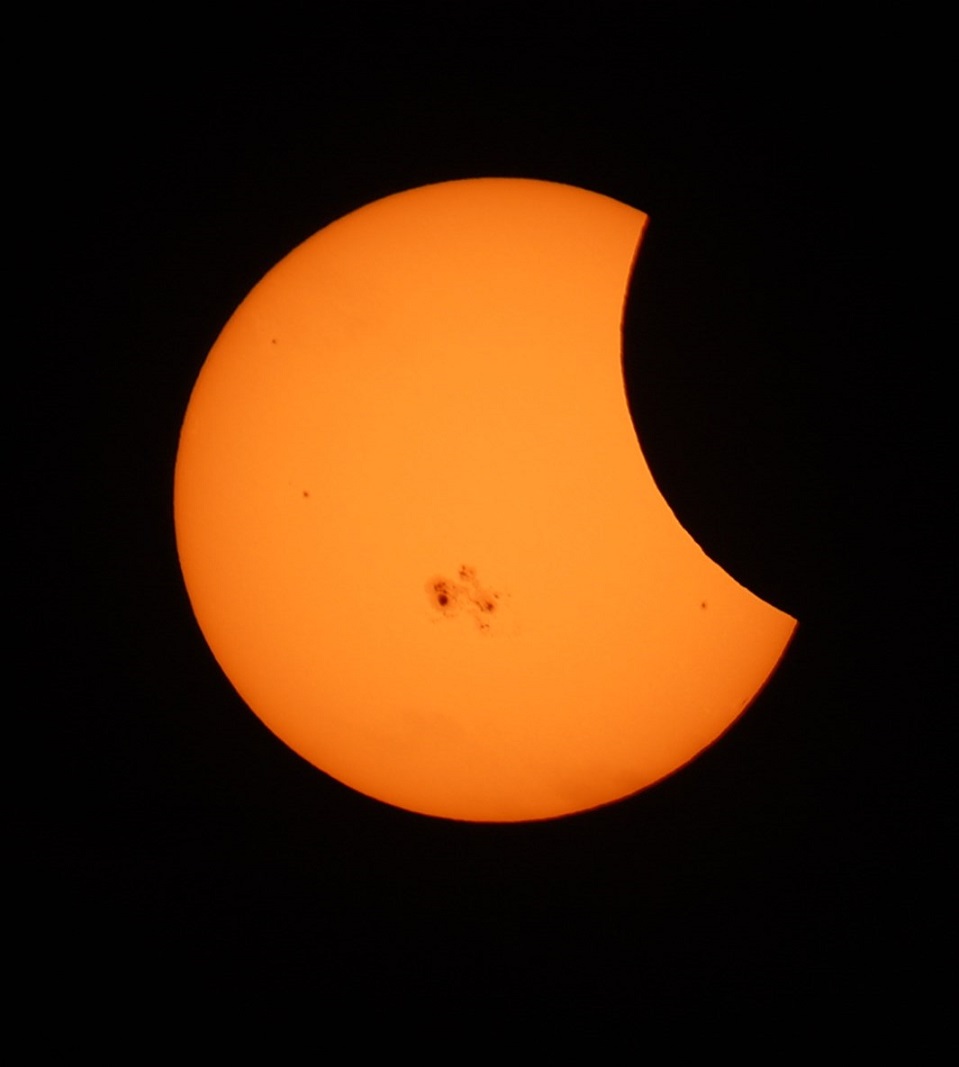
Astronomy in Space with David Dickinson
See Amazing Views of the April 8th Total Solar Eclipse from Space
Millions of viewers were wowed by last week’s total solar eclipse. Now, we get to see the eclipse from another angle: space.

Explore the Night with Bob King
Jupiter Meets Uranus in Twilight; Supernova Erupts in Nearby Spiral Galaxy
Jupiter aligns with distant Uranus before it exits the evening sky as a bright supernova flares in the southern galaxy NGC 3621.

Why We Look Up with Jennifer Willis
Awe in the Shadow of a Partial Eclipse
A partial eclipse — Eclipse Lite, if you will — can also offer a sense of wonder, albeit on a smaller scale than totality.

An Early End for the Chandra X-Ray Observatory?
NASA budget constraints could wind down operations of the iconic Chandra X-Ray Observatory.

Explore the Night with Bob King
What Will We See in the Sky During Totality?
Most of our time will be focused on Sun during the minutes of totality on April 8th, but consider tearing yourself away for a few seconds to put it all in context.

Strong Magnetic Fields Swirl Near Milky Way’s Black Hole
Astronomers have detected twisted, orderly magnetic fields near the event horizon of Sagittarius A*.

Southern Stargazing with Jonathan Nally
The Stars of the Carina Constellation
Get to know the stars of Carina constellation — and learn how to spot the False Cross instead of being fooled by it!

Explore the Night with Bob King
Is Betelgeuse Fading Again?
Betelgeuse has dipped nearly half a magnitude since late January. Could it be headed for another Great Dimming Event? We also take a look at this spring's "other" eclipse.

Why We Look Up with Jennifer Willis
Moonshots: The Successful Failure of Peregrine One
Space is hard, even when you don’t leave the ground.

Explore the Night with Bob King
Fuzzy Glows: See Zodiacal Light, Gegenschein, Airglow, and Aurorae
Find time this season to set aside your telescope and seek the night sky's ghostly glows.

Astronomy in Space with David Dickinson
Odysseus Lander Is on the Moon
Odysseus has become the first mission of NASA's Commercial Lunar Payload Services program to soft-land on the Moon.

Astronomy in Space with David Dickinson
Japan's Lunar Lander Wakes Up (Again!)
The Japanese space agency has reestablished contact with its SLIM lunar lander prior to sunset, enabling mission science to continue.

Astronomy in Space with David Dickinson
The Nova-C Lander Launches for the Moon
The second Commercial Lunar Payload Services mission of 2024 IM-1 Nova-C heads Moonward.

Southern Stargazing with Jonathan Nally
Get to Know the Carina Constellation
The southern constellation Carina contains arguably the best nebula in the sky, along with a host of other fascinating stars and clusters.

Explore the Night with Bob King
Winter's Finest Triple Stars
Double stars are wonderful, but triples are terrific! Here are 16 trios to enjoy the next clear night.

NASA's Juno Mission Makes Closest Flyby Past Io
Juno has revealed Jupiter's volcanic moon Io as never before.

Why We Look Up with Jennifer Willis
My Stellar Love Affair with the Pleiades
When we observe the little wonders of the sky, we can form deep personal connections.

Explore the Night with Bob King
The Best Comets to Look for in 2024
If you like chasing comets, here's a guide to the year's best and brightest.

Astronomy in Space with David Dickinson
NASA Ends Mars Ingenuity Helicopter Mission
NASA’s ground-breaking Ingenuity helicopter, part of the Perseverance mission, comes to a rest on the Red Planet.

Asteroid 2024 BX1: From a Light in the Sky to Rocks on the Ground
The asteroid 2024 BX1 went from a moving dot of light to rocks on the ground in mere hours — and amateur astronomers were critical to both discovery and recovery.
